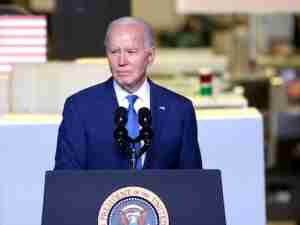In a recent paper, Federal Reserve economists argued that those external deficits - which are currently at or near record highs - needn't pose a burden on the US or world economies.
'The historical evidence suggests, at a minimum, that it is quite possible for the US trade deficit to narrow without undue economic distress, either at home or abroad,' Fed economists Steven Kamin, Trevor Reeve and Nathan Sheets wrote in the paper.
'Moreover, past experience points to the possibility that when US external adjustment materializes, it could do so in a way that helps stabilize the global economy, cushioning declines in US demand and limiting overheating in foreign economies,' the paper stated.
In 2006, the US trade deficit equaled almost six percent of gross domestic product. The current account deficit - the most comprehensive measure of international transactions that includes capital and investment income flows - was even higher.
Those gaps have long been cited as a risk to the global economy, and the US has been urged to bring them down by boosting national savings and consuming less.
The oft-cited worry is that any adjustment in global imbalances such as the US current account gap might be 'disorderly,' and lead to a sudden drop in the dollar, higher interest rates and a steep slowdown in US consumer spending, which provides a good deal of the demand for global goods and services.
Fed Chairman Ben Bernanke also thinks the US trade and current account deficits should come down, but he has indicated that adjustment can occur in a 'gradual' manner.
'We should probably be trying to bring our current account down gradually, over time,' Bernanke said in Congressional testimony earlier this year.
In examining data going back 35 years, the Fed economists found that US domestic demand has grown 2.6 percentage points slower during times that the trade deficit has come down versus when it has widened. 'Most notably, growth of residential construction plunged at an annual rate of nearly 14%age points' during times when the trade deficit has narrowed, they wrote.
That demand slowdown was partially offset by exports, which added 1.6 percentage points more to GDP during times of trade balance adjustment, meaning overall GDP grew 1.1 percentage points less when the trade deficit adjusted down versus when it went up.
Though the US trade deficit is still very high, the US economy has behaved in a way consistent with the adjustment process. Domestic demand, particularly housing, has slowed. And net exports have added to GDP growth in two of the past four quarters after subtracting from it in eight of the previous nine.
Meanwhile, foreign economies have little to fear from a smaller US trade gap, the Fed staff study said, as ''the historical record suggests that US external adjustment generally has not been injurious to our trading partners.'
'Net exports impose a slight drag on (foreign) GDP growth during US adjustment periods, but this is offset by stronger domestic demand growth,' according to the Fed paper. (Dow Jones & Company, Inc.)








